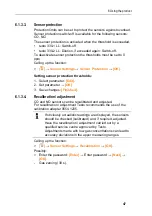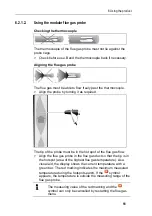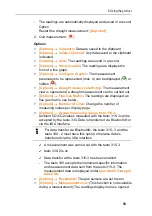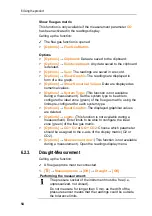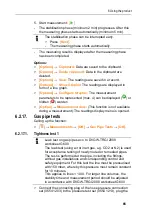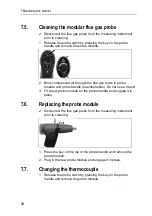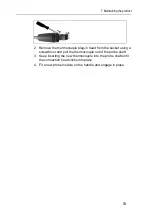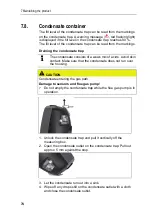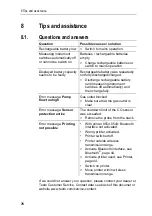
6 Using the product
61
6.2.12.
Oil flow
The function is only available if the chosen fuel is an oil.
Calling up the function:
>
[ ]
→
Measurements
→
[OK]
→
Oil Flow
→
[OK]
.
Performing the measurement:
1.
Select the parameters
Oil Flow
(of the oil nozzle) and
Oil
Pressure
(no effect on calculation):
[
▲
]
,
[
▼
]
→
[Edit]
.
2.
Enter values.
[
▲
]
,
[
▼
]
and partly
[
◄
]
,
[
►
]
→
[OK]
.
- The calculated oil burner capacity (in kW) is displayed.
Options:
>
[Options]
→
Clipboard
: Data are saved to the clipboard
>
[Options]
→
Delete clipboard
: Any data saved to the clipboard
is deleted.
>
[Options]
→
Save
: The readings are saved in a protocol.
>
[Options]
→
Unit settings
: The unit for the oil flow can be
changed (
kg/h > gal/h
or
gal/h > kg/h
).
6.2.13.
CO ambient
✓
An ambient CO probe (recommended) or a flue gas probe must
be connected.
Cigarette smoke influences the measurement by more than
50 ppm. The breath of a smoker influences the
measurement by about 5 ppm.
When using an ambient CO probe, note that:
The direction of flow of the gas has an effect on the
accuracy of the measurement. Frontal flow onto the probe
leads to higher readings. The best measurement results are
achieved when the probe is moved gently backwards and
forwards.
When using the ambient CO probe and the flue gas probe,
note that:
The probe must be in the open air (CO-free) during the
zeroing phase!
Calling up the function:
>
[ ]
→
Measurements
→
[OK]
→
CO Ambient
→
[OK]
.
Содержание 330
Страница 1: ...testo 330 Flue gas analyzer Instruction manual ...
Страница 2: ...2 ...
Страница 82: ......
Страница 83: ......
Страница 84: ...0970 3310 en 10 en_DE ...

